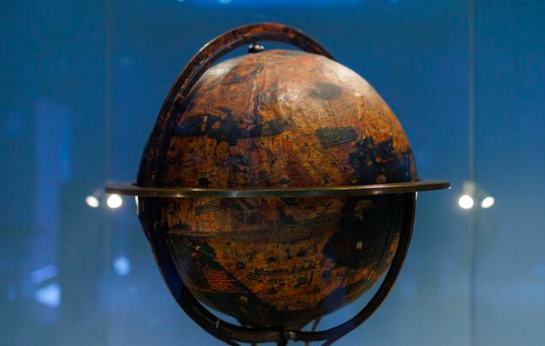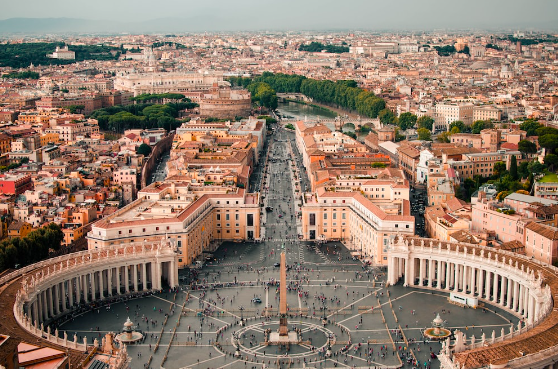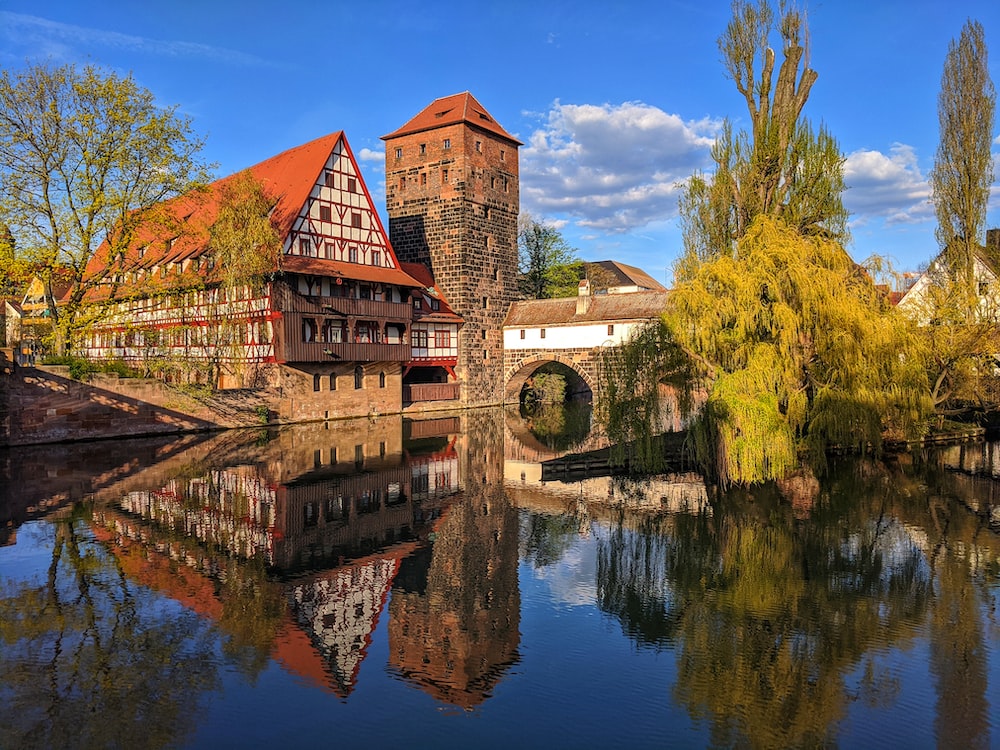On a recent trip to Germany I discovered the Erdapfel in Nuremberg, pictured above. The Nürnberg Terrestrial Globe is the oldest existing scale model of Earth. Known as the Erdapfel (meaning “Earth apple”), it was created around 1492 by German explorer Martin Behaim and painter Georg Albrecht Glockenthon. Standing before this humble-looking globe, I marvelled at the significance it held in the history of cartography. It was a precursor to modern-day maps, a testament to the curiosity and drive of humanity to explore and understand the world. It was because of UNESCO that I was here today.
Examining the Globe up close, I could imagine the explorers of old using such rudimentary yet ground-breaking tools to navigate uncharted territories. It made me appreciate the progress we’ve made in our understanding of the world, thanks to the advancements in technology and science.
As a passionate UNESCO aficionado, I have always been captivated by the remarkable UNESCO World Heritage Sites scattered across the globe. These sites, whether showcasing human ingenuity or the wonders of nature, stand as testaments to the extraordinary diversity and creativity of our planet. In this exploration, we delve into the countries boasting the highest numbers of UNESCO World Heritage Sites—remarkable monuments, landscapes, and ensembles that have been recognized for their outstanding universal value.
To qualify for inclusion on the UNESCO World Heritage list, a site must exhibit exceptional universal value and meet at least one of the ten specific selection criteria outlined by UNESCO. These criteria are stringent and include conditions like representing a ‘masterpiece of human creative genius’ and demonstrating ‘an important interchange of human values’. Many countries have achieved this prestigious recognition multiple times, showcasing the depth and breadth of their cultural and natural heritage.
In the grand tapestry of UNESCO World Heritage Sites worldwide, Italy emerges as the undisputed leader, boasting a staggering 58 inscriptions. Italy’s rich history, exquisite art, and diverse landscapes have earned it this prestigious position. Among its renowned UNESCO-listed sites are architectural marvels such as the Piazza del Duomo in Florence and the historic centres of Rome and Venice. These iconic sites attract travellers from all corners of the globe, providing a glimpse into the grandeur of human achievement throughout the ages.
The Dolomites, a mountain range of unparalleled beauty, also enjoy the protective embrace of UNESCO. The jagged peaks and scenic landscapes of the Dolomites are a haven for nature enthusiasts and adventurers. The city of Verona, forever etched in the pages of literary history as the birthplace of the star-crossed lovers Romeo and Juliet, is another UNESCO-protected gem in Italy. Additionally, the towering stratovolcano Mount Etna, an active force of nature, is celebrated as a World Heritage Site, standing as a testament to Earth’s geologic wonders.
While Italy leads the pack with the highest number of UNESCO World Heritage Sites, other nations also boast an impressive array of recognized landmarks. China, a country steeped in history and cultural heritage, follows closely behind with 56 UNESCO-listed sites. The Great Wall of China, an architectural wonder stretching over 13,000 miles, is perhaps the most iconic of these. Its sheer magnitude and historical significance make it a symbol of China’s ancient civilization and engineering prowess.
China’s imperial palaces, ancient cities, and beautiful landscapes, such as the Forbidden City in Beijing and the Terracotta Army in Xi’an, contribute to its impressive UNESCO portfolio. The natural wonder of Zhangjiajie National Forest Park, with its towering sandstone pillars, served as the inspiration for the mythical world of Pandora in James Cameron’s blockbuster film “Avatar.” Not far behind is Germany, a nation renowned for its rich history and cultural contributions. Germany’s 51 UNESCO World Heritage Sites showcase a fascinating blend of architectural, historical, and natural wonders. The historic centre of cities like Stralsund and Regensburg, along with the awe-inspiring Cologne Cathedral, contribute to Germany’s UNESCO accolades.
Germany’s natural landscapes are equally remarkable, with places like the Wadden Sea, a UNESCO-listed tidal ecosystem, highlighting the country’s commitment to preserving its diverse habitats. The breath-taking palaces and parks of Potsdam, including Sanssouci Palace, are a testament to Germany’s cultural heritage and architectural brilliance.
France, a country synonymous with art, culture, and sophistication, claims the fourth spot with 49 UNESCO World Heritage Sites. France’s heritage is an ode to human creativity, encompassing iconic landmarks like the Palace and Park of Versailles, the historic centre of Avignon, and the grandeur of Mont-Saint-Michel.
The renowned wine regions of Bordeaux and Champagne, each recognized as UNESCO World Heritage Sites, further showcase France’s cultural and culinary contributions to the world. The prehistoric cave art in the Vézère Valley offers a glimpse into the distant past, underlining the depth of historical significance present within France’s borders.
Spain, a treasure trove of historical and architectural wonders, follows closely with 49 UNESCO-listed sites. The Alhambra, a palatial fortress in Granada, with its intricate Moorish architecture and beautiful gardens, is a jewel in Spain’s crown of UNESCO World Heritage Sites.
The historic centres of cities like Toledo, Salamanca, and Segovia showcase Spain’s rich history, reflected in their ancient streets, churches, and castles. The works of the renowned architect Antoni Gaudí, including the Sagrada Familia in Barcelona and Park Güell, are a unique blend of creativity and innovation that earned them their UNESCO recognition.
With the mesmerizing landscapes of the Peak District, the Lake District, and the Giant’s Causeway, the United Kingdom claims the sixth position with 32 UNESCO World Heritage Sites. The diverse array of sites in the UK ranges from architectural masterpieces like the Tower of London and Westminster Abbey to natural wonders like the Jurassic Coast.
India, a land of ancient civilizations and diverse cultures, boasts 38 UNESCO World Heritage Sites. The epitome of love, the Taj Mahal in Agra, stands as a global icon and a UNESCO-protected wonder. India’s rich history is further represented by sites like the Qutub Minar, Jaipur’s historic forts, and the ancient temples of Khajuraho.
The cultural landscapes of India, such as the majestic hill forts of Rajasthan and the historic city of Ahmedabad, contribute to the nation’s diverse UNESCO recognition. The group of monuments at Mahabalipuram, showcasing intricate rock-cut temples and sculptures, are a testament to India’s architectural prowess and artistic heritage.
The Russian Federation, renowned for its vast landscapes and diverse cultures, claims the eighth spot with 29 UNESCO World Heritage Sites. Russia’s UNESCO portfolio spans from the historic centre of Saint Petersburg to the beautiful natural landscapes of the Golden Mountains of Altai.
The Kremlin and Red Square in Moscow, with their architectural grandeur and historical significance, represent Russia’s cultural heritage. The historical and architectural complex of the Kazan Kremlin, showcasing a blend of Tatar and Russian cultures, reflects the nation’s diversity and rich tapestry of traditions. The cultural and historical marvels of Japan earn it the ninth position, with 24 UNESCO World Heritage Sites. Japan’s UNESCO portfolio is a testament to its unique blend of tradition and modernity. The historic monuments of Ancient Kyoto, with its temples, shrines, and gardens, provide a glimpse into Japan’s past and the development of its distinct architectural style. Mount Fuji, an iconic symbol of Japan, is recognized as a World Heritage Site for its natural beauty and cultural significance. The Shirakami-Sanchi mountain range, known for its virgin beech forests, is a testament to Japan’s commitment to preserving its pristine natural landscapes.
Rounding off the top ten is Mexico, a nation steeped in ancient history and diverse cultures. Mexico’s 34 UNESCO World Heritage Sites showcase the breadth of its historical and architectural contributions. The ancient city of Teotihuacan, with its impressive pyramids and temples, provides a window into Mexico’s pre-Columbian civilization.
The historic center of Mexico City and Xochimilco, with its colorful trajinera boats, are reflections of the country’s rich cultural heritage. The ancient Mayan city of Chichen Itza, with its iconic El Castillo pyramid, stands as a testament to the advanced engineering and architectural expertise of the Mayans




